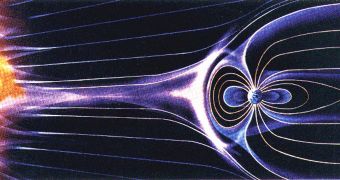According to a new report, released by a collaboration of scientists from the National Center for Atmospheric Research (NCAR), and the University of Michigan, it may be that sunspot activities are not enough to gage the intensity of solar actions, despite already-established knowledge. As an argument to prove their point, the experts showcase the fact that, last year, the Earth was literally “bombarded” with high levels of solar radiation, even though sunspots were nowhere in sight. Over the past couple of years, the Sun has been in an unusually quiet phase, NSF News reports.
Our Sun works in 11-year cycles, characterized by periods of high and low solar activity. However, the cycle we are in now is very peculiar as far as activity from the star goes. We were now supposed to be entering a period of intense activity, and sunspots are nowhere to be seen. This trend had astronomers worried last year, but some of their concerns disappeared in early 2009, when several sunspots appeared. “The Sun continues to surprise us. The solar wind can hit Earth like a fire hose even when there are virtually no sunspots,” NCAR's High Altitude Observatory expert Sarah Gibson says.
Gibson is the lead author of a new paper detailing the team's hypothesis, which appears in the September 17th issue of the respected Journal of Geophysical Research. Experts at the American space agency NASA and the US National Oceanic and Atmospheric Administration (NOAA) also contributed to the report. The investigation was funded by NASA and the National Science Foundation (NSF).
“It is vitally important to realize that the 'quiet' sun really isn't all that quiet. These high-speed streams of wind can affect many of our communications and navigation systems. And they can come at any time, during any part of the solar cycle,” NSF Division of Atmospheric Sciences Program Director Rich Behnke explains. “The fact that Earth can continue to ring with solar energy has implications for satellites and sensitive technological systems. [The new research] will keep scientists busy bringing all the pieces together,” Gibson concludes.

 14 DAY TRIAL //
14 DAY TRIAL //